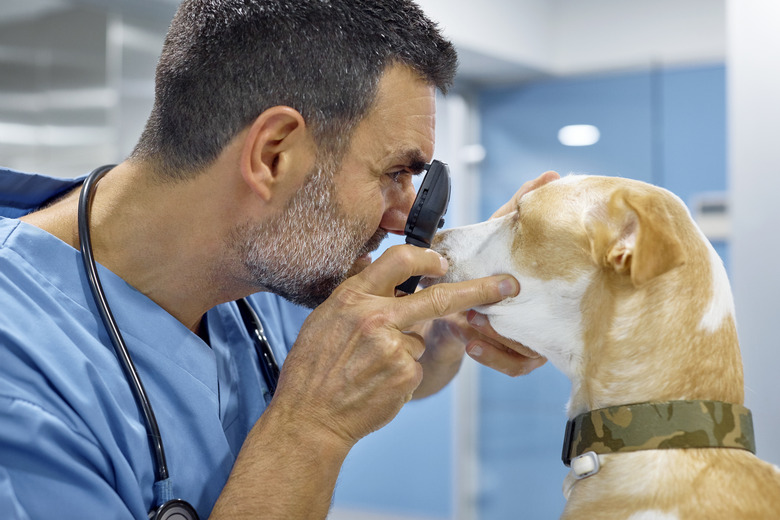Why Would A Dog Have Enlarged Pupils?
Just like us, the pupils of dogs' eyes enlarge or constrict depending on how much light they're exposed to. When your dog is in bright sunlight his pupils should be small. When it's dark his pupils should be enlarged.
Three signs that there may be a problem with your dog's eyes are, his pupils are out of sync with the amount of light they're exposed to, they don't change regardless of whether he's in light or dark, or your dogs' pupils are different sizes.
Enlarged or dilated pupils in dogs could result from a variety of conditions. There may be no cause for alarm but pupil dilation can be a sign of some serious eye diseases. So it's a good idea to get your dog to the vet as soon as you notice the problem. Though it could turn out to be a minor issue, it's always better to be safe than sorry when your best friend's eyes are at stake. A "wait and see" approach could cost your dog his vision.
Mydriasis and anisocoria in dogs
Mydriasis and anisocoria in dogs
Normally, the pupil's size is determined by the amount of light entering the eye. If one or both of your dog's pupils are dilated in bright light, something isn't right. If both of your dog's eyes are dilated she could have a condition called mydriasis. If the pupil in one eye is larger than the other it could be anisocoria. A veterinary examination is necessary to determine exactly what the problem is.
Be sure to tell your vet what medications your dog is on or what she may have gotten into. Also tell him if your dog had an accident that could have caused head trauma.
Based on information you provide and a standard physical exam, your vet may want to do some specific tests. He may measure tear production and check the pressure in each eye. He may also put a dye in your dog's eyes to help him see if there's an injury or ulcer. Blood tests and a biopsy might also be recommended.
Does your dog have glaucoma?
Does your dog have glaucoma?
Humans aren't the only ones who can get glaucoma. Dogs get it too. Glaucoma occurs when the fluid inside the eye can't drain properly. This causes a painful buildup of pressure. While glaucoma worsens slowly in humans, it progresses so rapidly in dogs that even with prompt treatment your dog could still lose his sight.
Symptoms include a dilated pupil that doesn't respond to light. Other signs of glaucoma include cloudiness, redness and swelling, tearing and obvious pain in the eye. Depending on the diagnosis, your vet can prescribe medication — both oral and topical — or perform surgery. Neither treatment necessarily saves vision but they can ease your dog's pain.
Progressive retinal atrophy
Progressive retinal atrophy
Progressive retinal atrophy eventually causes total blindness. Because it occurs gradually, you might not notice the early symptoms. Night vision usually goes first. Your dog might be reluctant to go outside in the dark, or she bumps into objects in dark rooms. Since it affects both eyes, you might notice your dog's pupils dilating as they try to bring in more light.
According to VeterinaryPartner.com, an abnormal shine known as "tapetal reflection" might be seen in the dilated pupils. If it's any consolation, PRA isn't painful, and blind dogs usually learn to adjust quite well, with their owner's help.
Other conditions that cause dilation
Other conditions that cause dilation
Other conditions that might cause pupil dilation include cancer, trauma, reaction to medication or the consumption of toxic substances. Anxious, fearful dogs often exhibit dilated pupils. Don't make any assumptions regarding the cause of your dog's enlarged pupils or give him any medication without veterinary approval.
